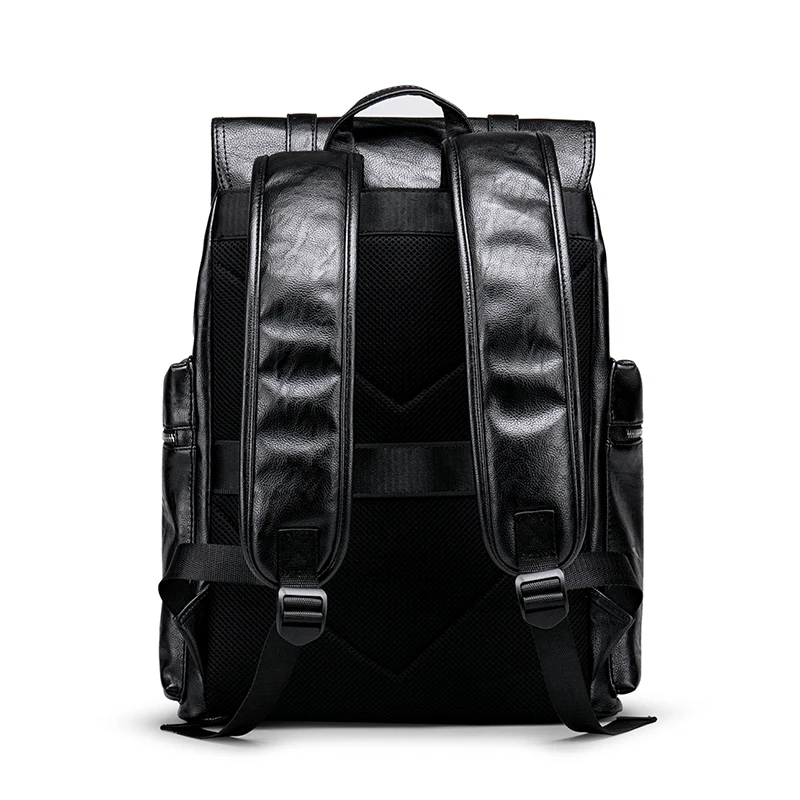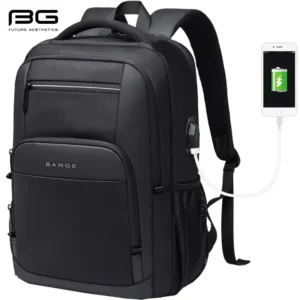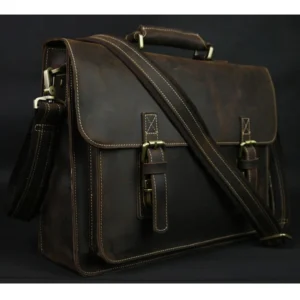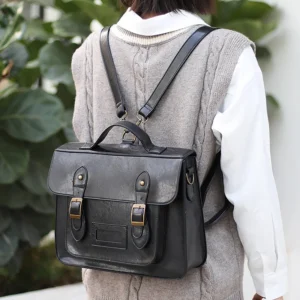Understanding the Daily Leather Challenges for Commuters
For busy commuters, leather items face a unique set of challenges that go beyond normal wear and tear. Unlike occasional leather users, commuters expose their leather goods to harsh conditions daily, creating specific maintenance needs that require attention.
Urban environments subject leather to a perfect storm of damaging elements. Your favorite leather backpack or shoes encounter:
- Microscopic debris and pollutants from subway systems and bus exhausts
- Frequent transition between outdoor elements and climate-controlled buildings
- Constant friction from brushing against surfaces in crowded spaces
- Unexpected rain exposure and humidity fluctuations
- Oil and sweat transfer from regular handling
These factors create cumulative damage that often goes unnoticed until significant issues develop. Studies show that daily urban exposure can accelerate leather aging by up to 40% compared to occasional use, with stress points developing in as little as 3-4 months of regular commuting.
The biggest challenge for commuters isn’t just the harsh conditions—it’s the time constraints. Most leather care guides recommend lengthy conditioning processes that busy professionals simply cannot accommodate in their schedules. This creates a need for specialized, efficient care routines that work within a commuter’s limited time.
Understanding proper leather conditioning and waterproofing techniques forms the foundation of effective maintenance for your daily companions. With the right approach, you can significantly extend the life of your leather items despite these challenging conditions.
Creating Your 5-Minute Commuter Leather Care Kit
Assembling a compact, efficient leather care kit is essential for busy commuters. Your kit should contain travel-friendly products that deliver results without requiring elaborate setups or lengthy application times.
Essential Components for Your Commuter Kit:
- Microfiber Cloth (2-3 small ones): These lint-free cloths are perfect for quick dusting, applying products, and buffing. Look for ones that fold to pocket-size.
- Leather Wipes: Pre-moistened cleaning wipes specifically formulated for leather provide convenient spot cleaning without the need for bottles or additional cloths.
- Travel-Size Leather Conditioner: Select a fast-absorbing formula in a 1-2oz container that doesn’t leave residue or require extensive buffing.
- Water Repellent Spray (mini): A small bottle of spray protection creates an invisible barrier against unexpected rain and spills.
- Stain Remover Pen: Choose a specially formulated pen for leather that can target small stains without spreading them.
- Dust Bag: A lightweight cotton bag protects items when not in use and can double as an applicator holder.
The key difference between traditional leather care products and commuter-friendly options is absorption time and convenience. Traditional conditioners might require overnight drying, which isn’t practical for items you need daily. Instead, focus on products specifically designed for quick application and fast results.
Store your kit in a small pouch that can travel with you or remain accessible at home for consistent care. Having these specialized leather care products for backpacks readily available makes maintaining your leather work backpacks and other items a habit rather than a chore.
Quick Daily Leather Protection Routines (Under 2 Minutes)
Incorporating brief leather care into your daily routine is the secret to maintaining beautiful leather without significant time investment. These ultra-quick routines prevent damage before it starts and take less time than brewing your morning coffee.
Morning Routine (60 seconds)
1. Quick Dust Removal (15 seconds): Use a microfiber cloth with a gentle sweeping motion to remove surface dust and debris before heading out.
2. Spot Check (15 seconds): Quickly inspect high-touch areas like handles, straps, and corners.
3. Light Protection Application (30 seconds): For rainy or particularly harsh days, apply a quick spritz of protectant to exposed areas.
Evening Routine (90 seconds)
1. Surface Cleaning (30 seconds): Wipe down the entire surface with a dry microfiber cloth, focusing on areas that contacted other surfaces.
2. Spot Treatment (30 seconds): Address any new marks or spots with a specialized leather wipe.
3. Air and Position (30 seconds): Place your leather item in a well-ventilated spot away from heat sources, properly shaped to maintain its form.
The effectiveness of these quick routines comes from their consistency rather than intensity. Daily attention prevents the buildup of damaging substances and allows you to catch potential problems early. Commuters who follow these brief routines report significantly fewer instances of deep cleaning requirements and longer overall product lifespan.
Many DIY leather care approaches for travel backpacks can be adapted to fit these time constraints, making it possible to maintain professional-looking leather goods without dedicated maintenance sessions during your busy week.
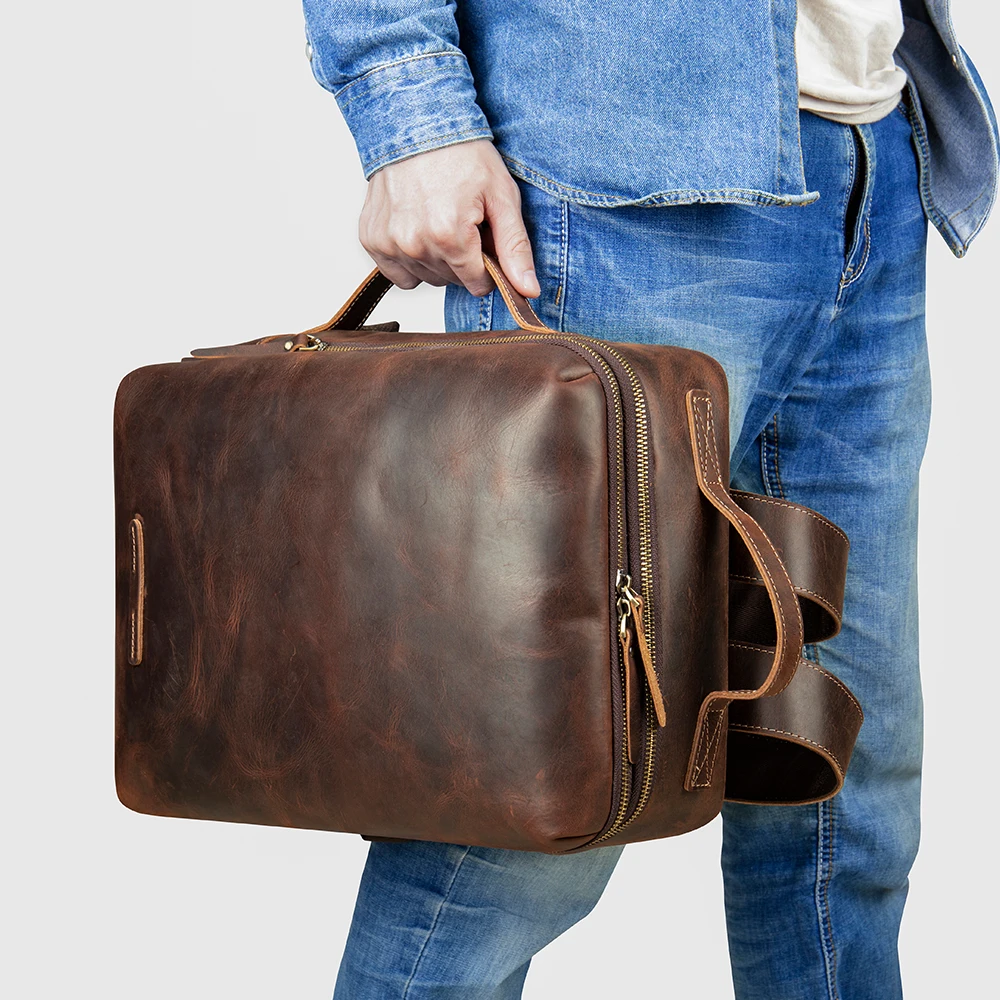
Weekly 10-Minute Deep Care Session
While daily maintenance prevents most issues, dedicating just 10 minutes each weekend for deeper leather care makes an enormous difference in preserving your leather items’ appearance and longevity.
Weekend Deep Care Procedure:
Thorough Surface Cleaning (2 minutes): Remove all visible dust and surface grime using proper cleaning motions—always wipe in one direction rather than circular motions to prevent grinding particles into the leather.
Inspect Trouble Spots (1 minute): Check seams, corners, handles, and edges where wear typically begins. Pay special attention to areas that come into contact with your body or other surfaces.
Targeted Cleaning (2 minutes): Address any spots or marks identified during inspection using appropriate cleaners for the specific type of stain.
Conditioning Application (3 minutes): Apply a thin layer of conditioner to prevent leather from drying out. Focus on flex points and areas showing early signs of dryness. The leather should absorb the conditioner without leaving surface residue.
Protection Renewal (2 minutes): Reapply water and stain repellent to areas that receive the most exposure, ensuring even coverage without oversaturation.
The efficiency of this routine comes from targeting specific areas rather than treating the entire item with each product every time. Test if conditioning is needed by gently scratching an inconspicuous area with your fingernail—if the leather appears lighter in the scratched area, it’s time to condition.
Understanding the ultimate guide to conditioning leather backpacks can help you recognize when your items need more attention. This is especially important for leather travel backpacks which face varying conditions and require consistent care to maintain their appearance.
Seasonal Leather Protection Strategies for Urban Commuters
Each season presents unique challenges for leather care, requiring specific adjustments to your maintenance routine. Anticipating these seasonal threats helps prevent damage before it occurs.
| Season | Specific Threats | Preventive Measures | Care Frequency |
|---|---|---|---|
| Spring | Unexpected rain showers, pollen, increased humidity | Enhance waterproofing, increase dusting frequency | Waterproof every 2-3 weeks |
| Summer | UV exposure, sweat, air conditioning dryness | UV protectant application, more frequent conditioning | Condition every 2 weeks |
| Fall | Fluctuating humidity, leaf tannins, early frost | Balanced conditioning, gentle cleaning after rain | Deep clean monthly |
| Winter | Salt exposure, extreme dryness, snow damage | Salt-specific protectants, immediate wiping after exposure | Weekly salt removal, monthly conditioning |
For spring and fall transitions, focus on flexibility in your care routine—these seasons often bring the most unpredictable weather patterns. During winter months, the leather’s greatest enemy is often the salt used on roads and sidewalks, which can cause permanent damage if not promptly removed.
Summer presents unique challenges with increased body oils and sweat transfer to leather items, requiring more frequent but lighter cleaning. Air conditioning can also extract moisture from leather, making consistent conditioning essential.
Understanding the complete guide to waterproofing leather bags becomes particularly important during seasonal transitions, when unexpected weather can catch commuters off guard. Applying appropriate protection before the season change occurs prevents playing catch-up with leather damage.
Emergency Leather Rescue: Quick Fixes for Common Commuter Issues
Even with regular maintenance, emergency situations happen. These quick fixes help address common problems before they become permanent damage:
Unexpected Rain Exposure:
– Immediately blot (never rub) excess water with a clean, dry cloth
– Allow natural drying away from direct heat sources
– Once dry, apply conditioner to prevent water spots and stiffness
– For severe soaking, stuff with paper to maintain shape while drying
Scuffs and Surface Scratches:
– For light scuffs, gently rub with a slightly damp microfiber cloth
– Apply a tiny amount of conditioner to the area and buff
– For deeper scratches, use your fingertip to apply conditioner directly to the scratch
– Allow to absorb, then buff with a clean cloth
Coffee or Beverage Spills:
– Blot immediately with a dry cloth or paper towel
– For water-based drinks, use a leather wipe designed for spot cleaning
– For milk or sugar-containing beverages, use a slightly damp cloth followed by a dry cloth
– Apply conditioner after the area has completely dried
Salt Stains:
– Create a solution of equal parts water and white vinegar
– Dampen a cloth (not the leather) and gently wipe the salt area
– Follow with a clean, water-dampened cloth to remove vinegar
– Dry completely before applying conditioner
Oil and Grease:
– Blot excess oil without rubbing it in
– Apply a small amount of cornstarch or talcum powder to absorb oil
– Let sit for several hours or overnight if possible
– Brush off powder gently and assess if treatment needs repeating
Having these emergency techniques in your knowledge arsenal helps protect your mens leather laptop backpacks and other items from permanent damage when accidents occur during your daily commute.
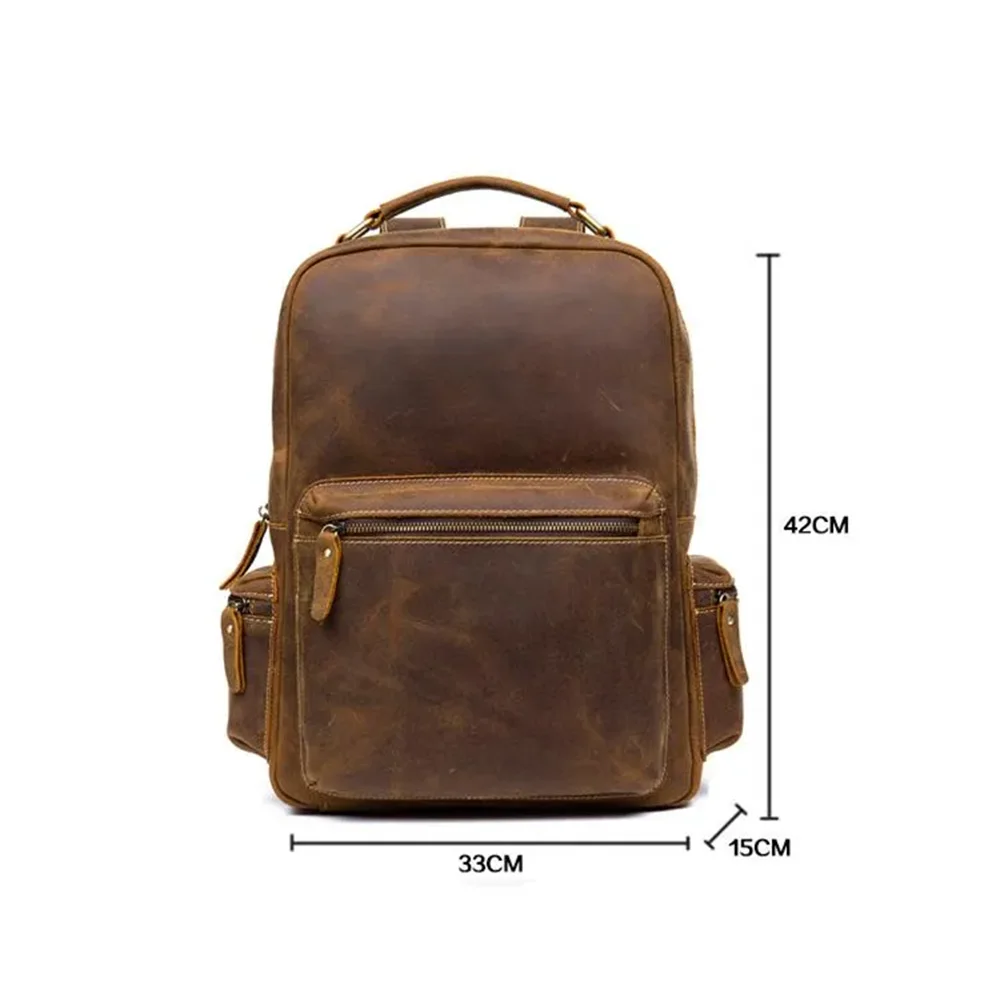
Item-Specific Care: Commuter Bags, Shoes, and Accessories
Different leather items face unique challenges during daily commutes and require specialized care approaches:
Backpacks and Messenger Bags:
– Focus conditioning on strap attachment points where stress concentrates
– Clean the back panel more frequently as it absorbs sweat and body oils
– Pay special attention to bottom corners that receive abrasion from setting down
– Regularly check and clean interior lining to prevent transfer of dirt to contents
– Clean hardware (zippers, buckles) with a separate cloth to avoid metal tarnish transfer to leather
Commuter Footwear:
– Wipe down the entire surface daily, focusing on toe areas that face scuffing
– Apply edge dressing to heel and sole edges monthly to prevent water absorption
– Use shoe trees overnight to maintain shape and absorb moisture
– Rotate between two pairs when possible to allow complete drying
– Apply conditioner to flex points (toe break area) more frequently than other areas
Small Leather Goods:
– Remove wallets from pockets nightly to prevent warping
– Clean card slots and currency compartments monthly with a thin cloth
– Avoid overstuffing which strains stitching and stretches leather
– Apply leather balm to edges where handling causes most wear
– Keep leather cardholders in interior pockets to reduce exposure
Leather Jackets and Gloves:
– Focus cleaning on collar and cuff areas that contact skin directly
– Hang jackets properly on padded hangers between wears
– Turn gloves inside out occasionally to air out
– Condition areas with natural movement creases more frequently
– Store with paper between layers during off-seasons
For all items, understand that different leather types require slightly different approaches. Comprehensive knowledge of leather bag maintenance can help you properly care for various items in your collection, particularly leather laptop backpacks which face multiple types of stress during daily use.
Smart Storage Solutions for the Time-Pressed Commuter
Proper storage is passive maintenance that protects your leather when not in use. For busy commuters with limited space, these efficient storage solutions maintain your leather’s condition without requiring dedicated storage areas:
Vertical Organization: Use hook systems behind doors or on unused wall spaces to hang bags without creating creases.
Multi-functional Stuffing: Maintain bag shape by stuffing with items you need to store anyway—clean scarves, lightweight sweaters, or even bubble wrap.
Breathable Covers: Use cotton pillowcases instead of plastic bags to protect from dust while allowing leather to breathe.
Strategic Placement: Store leather items away from windows, heaters, and air conditioners to prevent drying and color fading.
Drawer Organization: For small leather goods, use adjustable drawer dividers to create dedicated spaces that prevent items from rubbing against each other.
Repurposed Shoe Trees: Wooden shoe trees can be used temporarily in soft leather bags to maintain structure when not in use.
14 Inch Leather Laptop Backpack, Brown Leather Backpack, Men's Leather Backpack, Vintage Leather Backpack
Price range: $177.28 through $199.12 Select options This product has multiple variants. The options may be chosen on the product pageCarry On Leather Backpack, Roll Top Leather Backpack
Price range: $77.76 through $96.48 Select options This product has multiple variants. The options may be chosen on the product pageDesigner Men's Backpack, Men's Leather Laptop Backpack, Men's Leather Work Backpack
Price range: $158.04 through $160.04 Select options This product has multiple variants. The options may be chosen on the product page15 Inch Leather Laptop Backpack, Leather Briefcase Backpack
$332.96 Select options This product has multiple variants. The options may be chosen on the product page17 Inch Leather Laptop Backpack, Men's Leather Travel Backpack, Men's Leather Work Backpack
Price range: $106.28 through $143.88 Select options This product has multiple variants. The options may be chosen on the product pageWomen's Leather Backpack, Women's Leather Work Backpack
Price range: $119.36 through $128.52 Select options This product has multiple variants. The options may be chosen on the product page
Creating a “landing zone” near your entrance specifically for leather items helps establish a routine of proper placement rather than tossing items onto furniture where they might get crushed or damaged. A simple shelf with appropriate hooks keeps your carry-on leather backpacks in ideal condition between uses.
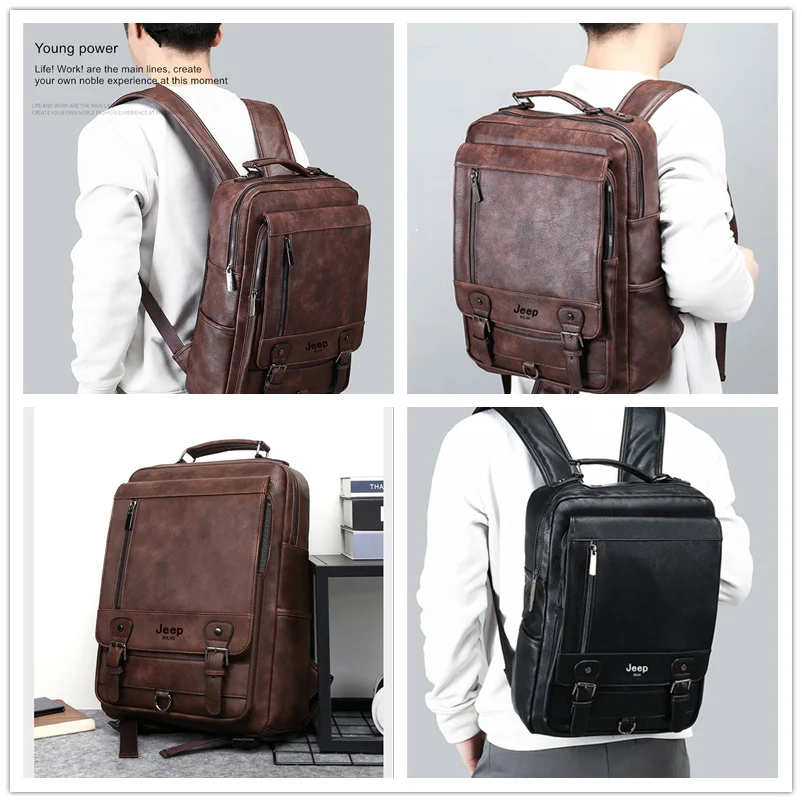
Essential Do’s and Don’ts for Urban Leather Care
Understanding these fundamental principles helps busy commuters maintain their leather goods with minimal time investment:
| DO | DON’T |
|---|---|
| Wipe down leather items daily with a dry cloth | Use household cleaners or soaps on leather surfaces |
| Address spills and stains immediately | Let water or liquids air dry on leather |
| Use products specifically designed for leather | Apply oils like olive oil or coconut oil as DIY solutions |
| Allow wet leather to dry naturally at room temperature | Use heat sources (hair dryers, heaters) to speed drying |
| Test new products on an inconspicuous area first | Apply polish to unclean leather surfaces |
| Store leather items stuffed to maintain shape | Store leather in plastic bags or non-breathable containers |
| Condition leather before it shows signs of drying | Over-condition which can lead to oil saturation |
| Keep leather away from direct sunlight when stored | Leave leather items in hot cars or direct sun exposure |
The science behind these recommendations is clear—leather is a natural material that continues to respond to its environment. For example, heat-drying leather forces moisture out too quickly, breaking down the fiber structure and causing irreversible damage.
Many commuters mistakenly use too much product, believing more is better. In reality, leather can only absorb a certain amount of conditioner, and excess product attracts dirt while potentially staining clothing and other items.
Understanding whether leather should dry before conditioning can help prevent common mistakes that damage full-grain leather backpacks and other premium items. Proper technique often matters more than the time spent on maintenance.
When to Seek Professional Help: Recognizing the Limits of DIY Care
While regular maintenance can address most leather care needs, certain situations call for professional intervention. Knowing when to seek expert help saves both your leather items and potentially expensive replacement costs.
Signs Professional Help Is Needed:
- Deep scratches that penetrate beyond the surface finish
- Stains that remain after multiple careful cleaning attempts
- Color loss or significant fading in specific areas
- Structural damage to seams, handles, or stress points
- Mold or mildew development despite cleaning efforts
- Hardware issues that affect functionality (broken zippers, loose rivets)
- Strong odors that persist despite proper cleaning and airing
When selecting professional leather care services, look for specialists who:
– Have specific experience with your type of leather item
– Can provide before/after examples of similar repairs
– Explain their process and expected results clearly
– Offer guarantees on their work
– Use proper terminology that demonstrates knowledge
For high-quality leather products like those from Summit Carry, investing in professional restoration can be far more economical than replacement. Most professional repairs for common issues cost between 15-25% of the item’s replacement value and extend usable life by years.
Ask potential leather care professionals about their experience with daily-use items rather than just antiques or specialty leathers. Commuter items face different challenges and require specific approaches to ensure they can continue to withstand daily urban environments.
By following these guidelines and establishing simple care routines, busy commuters can maintain beautiful, functional leather goods that withstand the rigors of daily use while developing the rich patina and character that makes quality leather so desirable.

